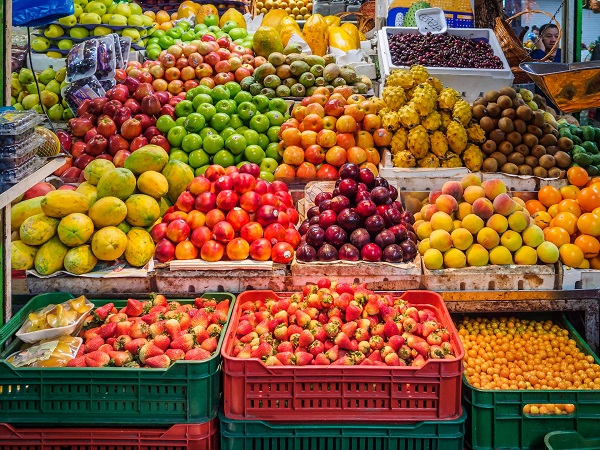Transporting perishable cargo such as food, pharmaceuticals, and flowers requires specialized logistics solutions to maintain product quality and safety.
Proper packaging plays a crucial role in this process, ensuring that temperature-sensitive cargo remains fresh throughout the supply chain. In this article, we will explore the best practices for logistics packaging for perishable cargo, which help minimize spoilage, reduce waste, and maintain product integrity.
1. Understand the Nature of the Perishable Goods
Before deciding on the packaging approach, it’s essential to understand the specific needs of the perishable cargo. Different products have varying sensitivities to temperature, humidity, and exposure to light or air. For example:
- Fresh fruits and vegetables require ventilation to prevent spoilage from trapped gases like ethylene.
- Meat and seafood need to be kept at extremely low temperatures to prevent bacterial growth.
- Pharmaceuticals often require precise temperature controls, sometimes even frozen conditions, to maintain efficacy.
The key to effective logistics packaging is tailoring it to the specific needs of the cargo.
2. Use Temperature-Controlled Packaging Solutions
The most critical aspect of packaging for perishable goods is maintaining the required temperature throughout the journey. Some common solutions include:
- Insulated Containers: These are used to protect goods from external temperature fluctuations. They often come with reflective materials and foam insulation to ensure the cargo stays within the required temperature range.
- Refrigerated Gel Packs: For items that must stay cool but not frozen, gel packs are often included in the packaging to maintain lower temperatures.
- Dry Ice: For products that need to stay frozen, such as ice cream or certain medical supplies, dry ice is commonly used in packaging. It sublimates over time but maintains a freezing environment for an extended period.
- Active Temperature Control Packaging: Advanced solutions like reefer containers (refrigerated containers) or units with active cooling mechanisms are used for long-haul shipping to keep the cargo at a constant temperature.
3. Maintain Airflow for Fresh Produce
Fresh produce, such as fruits and vegetables, need to breathe during transport to prevent spoilage caused by excess moisture or gas buildup. Proper ventilation in packaging ensures that these goods maintain their quality during transit. Corrugated cardboard boxes with perforations or breathable plastic films are often used to allow airflow.
In some cases, modified atmosphere packaging (MAP) is employed to extend the shelf life of fresh produce. MAP uses specific gas combinations to slow down the ripening process, ensuring that the produce stays fresh for longer periods.
4. Ensure Proper Sealing and Insulation
In addition to maintaining temperature, it’s vital to ensure that the packaging is well-sealed to protect against external factors such as contaminants, humidity, or physical damage. This is particularly important for goods like meat, seafood, and dairy products, which can easily become compromised if exposed to the environment.
Vacuum sealing is often used for these products, removing air from the packaging to reduce oxidation and bacterial growth. This technique also minimizes package size, which is a space-efficient solution for logistics.
5. Use Durable, Shock-Resistant Packaging
Perishable goods are often fragile, and damage during transit can lead to loss of both product quality and freshness. Shock-resistant packaging, such as reinforced cardboard boxes or crates, provides extra protection against vibrations and impacts during transport.
For items like fruits, flowers, or pharmaceuticals, cushioning materials such as air pillows, foam inserts, or bubble wrap can prevent bruising or damage during handling.
6. Incorporate Smart Packaging and Tracking Technology
Incorporating smart packaging solutions is becoming a common practice in cold chain logistics. These include:
- Temperature loggers: Small devices embedded in packaging that monitor and record temperature data throughout the shipping process.
- RFID Tags & IoT Sensors: Advanced tracking devices that provide real-time information about the location and condition (such as temperature and humidity) of the cargo.
These technologies not only ensure compliance with temperature requirements but also provide visibility to both the shipper and recipient, ensuring transparency and trust in the logistics process.
7. Follow Regulatory Standards
Perishable goods, especially food and pharmaceuticals, are subject to stringent regulatory requirements depending on the region. In the United States, for example, the FDA’s Food Safety Modernization Act (FSMA) governs food safety practices, while the Good Distribution Practice (GDP) guidelines oversee pharmaceutical logistics in many regions.
Proper packaging must adhere to these regulations, ensuring that the cargo is handled safely and within the prescribed guidelines. Always check with local and international regulatory standards to ensure compliance in your logistics operations.
8. Plan for Contingencies
Unforeseen delays in transport, whether due to weather conditions or logistical challenges, can lead to spoilage of perishable goods. To mitigate this risk, it’s crucial to have contingency plans in place. This may include extra insulation in packaging, longer-lasting refrigerants, or additional tracking solutions to provide real-time updates on the cargo’s status.
Moreover, partnering with reliable logistics providers who have experience in cold chain management can ensure swift response times in the event of an emergency.
Conclusion: Optimize Your Logistics Packaging for Perishable Cargo
Ensuring the safe and fresh delivery of perishable goods requires careful planning and adherence to the best practices in logistics packaging. From temperature-controlled packaging solutions to shock-resistant materials and smart technologies, the right packaging approach can minimize spoilage, reduce waste, and preserve the quality of temperature-sensitive products.
By following these best practices, companies can optimize their cold chain logistics processes and maintain the trust of consumers and partners, ensuring that perishable goods arrive at their destination in peak condition.
Also Read
World’s Top 10 Cold Chain Logistics Companies: Leaders in Temperature-Controlled Shipping
Top 10 Global Freight Forwarders in 2024: Driving International Logistics

